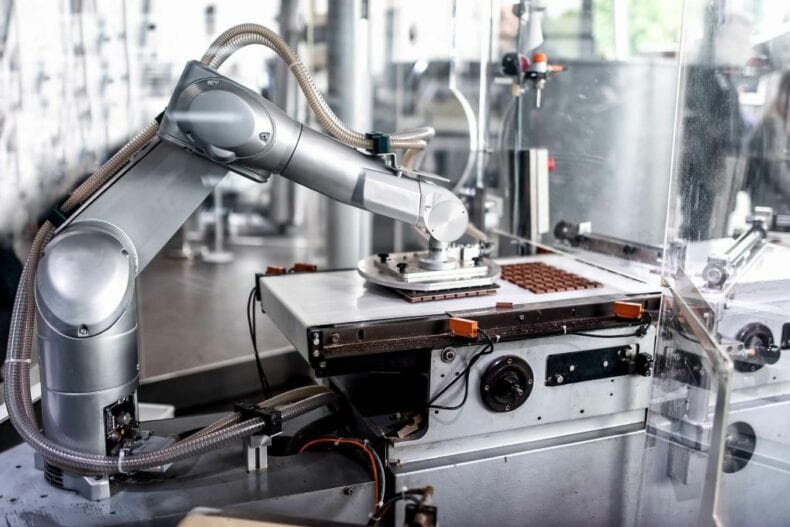How to Choose the Right Pick and Place Robot
Selecting the best industrial robot for your operations depends on several factors:
Speed Requirements – Consider how many items per hour need to be handled.
Precision Needs – If working with electronic components or delicate items, high positioning accuracy is crucial.
Payload Capacity – For handling heavy objects or large packaging containers, a 6-axis robotic arm may be ideal.
Workspace Limitations – Compact design is essential for limited spaces, while rotational movement helps with reach.
Integration Needs – Robots must work seamlessly with Warehouse Management Systems, conveyor belts, and control systems.
Industry Requirements – Pharmaceutical, beverage, and automotive industries may require specialised robots for specific logistics operations.
Applications of Pick and Place Robots
Pick and place robots are used across numerous industries for a wide variety of tasks, including:
Palletising and depalletising – Arranging and stacking items in distribution centres.
Order picking and replenishment – Automating warehouse management systems.
Assembly tasks – Handling electronic components in assembly applications.
Packaging and sorting – Placing individual items into shipping containers.
Food processing – Handling delicate items such as chocolates and baked goods.
Quality control – Detecting defective products in the production process.
Pick and Pack Robotics
Pick and pack robotics streamline warehouse management, logistics operations, and fulfilment processes by automating the selection and packaging of products. These robotic systems enhance operational efficiency by accurately picking individual items, assembling orders, and placing them into packaging containers or shipping containers with minimal placement error. Using advanced software, robotic arms with mechanical grippers or suction cups ensure precise placement, reducing damage to delicate items and improving packaging productivity.
These systems integrate seamlessly with conveyor belts and Warehouse Management Systems (WMS) to optimise workflow, increase items per hour, and reduce labour costs. Pick and pack robots are widely used across numerous industries, including the pharmaceutical industry, beverage industry, and automotive assembly, handling a wide variety of tasks with speed and accuracy. Their ability to perform repetitive and hazardous tasks makes them a crucial asset in high-volume applications, improving accuracy and throughput across production lines.
Why Choose LAC for Pick and Place Automation?
At LAC Conveyors & Automation, we design and integrate custom robotic systems tailored to your manufacturing process. Our expertise in material handling, logistics operations, and packaging productivity ensures that your business benefits from cutting-edge automation technology.
Looking to streamline your operations with pick robots? Get in touch with our experts today.




